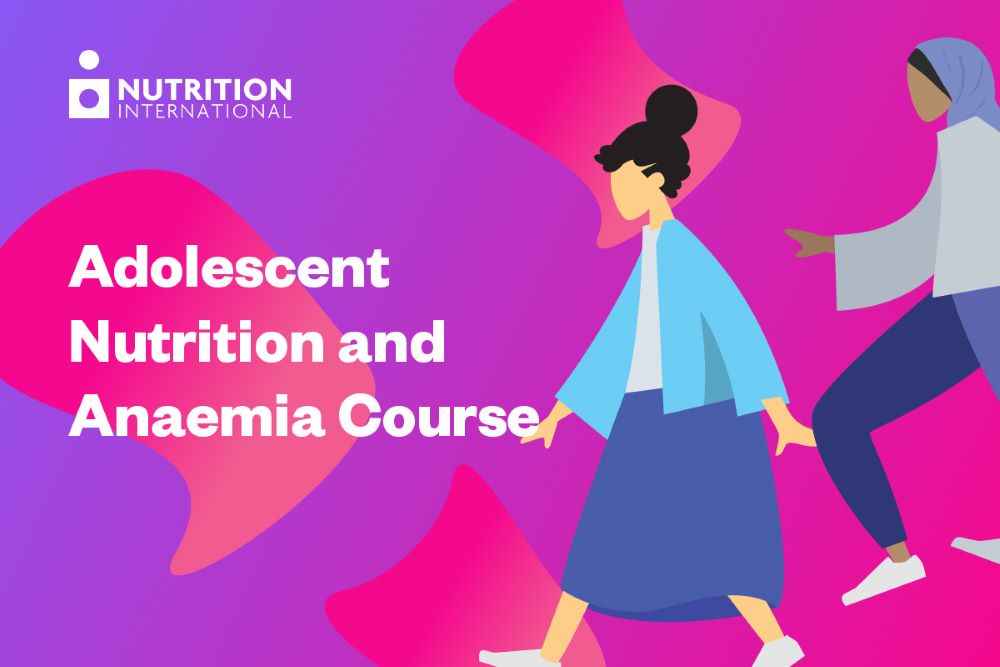News
Canada announces historic investment in the global fight against malnutrition
February 6, 2025
WP_Term Object
(
[term_id] => 48
[name] => News
[slug] => all-news
[term_group] => 0
[term_taxonomy_id] => 48
[taxonomy] => news-category
[description] => Stay up to date on our announcements, newest projects and partnerships, and news about how we’re making a difference in the lives of people around the world.
[parent] => 0
[count] => 272
[filter] => raw
)
Nutrition International bridges gap in adolescent nutrition education
Nutrition International has launched a new online course entitled Adolescent Nutrition and Anaemia. The course will help to build capacity to improve nutrition for adolescents around the world.
Posted on September 12, 2019

September 12, OTTAWA – Nutrition International has launched a new online course focusing on adolescent nutrition, an area that has previously been underfunded and overlooked. The course, entitled Adolescent Nutrition and Anaemia, will help to build capacity to improve nutrition for adolescents around the world.
“As a global leader in nutrition, Nutrition international takes a ‘no missed opportunities’ approach to ensure we are delivering the right nutrition at the right time,” said Joel Spicer, President and CEO of Nutrition International. “For too long, adolescence has been a missed opportunity. This course brings new knowledge and evidence to the global health sector, paving the way for critical advancements in adolescent nutrition.”
Globally, adolescents are greatly impacted by malnutrition. Girls are particularly affected, due to their specific biological needs, compacted by social and gender norms. Iron-deficiency anaemia is recognized as the number one cause of disability adjusted life years ―defined as lost years of optimal health― for girls aged 10 to 19 and boys aged 10 to 14. Anaemia negatively impacts cognitive development and concentration, resulting in poor school performance and jeopardizing future earning potential.
After the first 1,000 days, adolescence is the most critical development period and presents a second window of opportunity for catch-up growth. Despite that, very little attention and limited resources have been directed towards improving adolescent nutrition.
“There is no one-stop-shop for information about adolescent nutrition and anaemia for people in this sector,” said Dr. Marion Roche, Senior Technical Advisory for Women’s Health and Nutrition at Nutrition International. “After identifying a significant gap in our staff and partners’ education and training we developed this course as a free resource to bridge that gap. We need a greater focus and more resources allocated to improving adolescent nutrition.”
Drawing from Nutrition International’s technical expertise and experience in the field, Adolescent Nutrition and Anaemia will offer nutrition program officers, implementers, partners, nutrition graduate students, and policy and decision makers a broad range of information, including the impacts of anaemia, interventions to improve adolescent nutrition, and best practices in engaging adolescents, using examples from Nutrition International’s programming. The course also highlights the existing data gaps and research still required.
Registration is now open for the Adolescent Nutrition & Anaemia course, which is divided into three sections of five video modules each. The first section of videos will be released every two weeks beginning September 12.